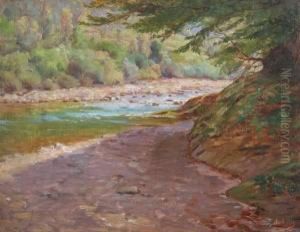Charles Ray Paintings
Charles Ray is a prominent American sculptor, born in 1953 in Chicago, Illinois. Known for his innovative and often provocative works, Ray has played a significant role in the contemporary art scene since the late 20th century. His sculptures are characterized by a blend of realism and abstraction, often exploring themes of the human body, consumer culture, and the natural world. Ray's meticulous attention to detail and his exploration of materials have set his work apart, making him a critical figure in the field of modern sculpture.
Ray's educational background in art began at the University of Iowa, where he initially studied under minimal and conceptual artists before transferring to the Mason Gross School of the Arts at Rutgers University, where he received his MFA. His early career saw a fascination with the process of crafting and the conceptual underpinnings of sculpture, leading to works that were both intellectually challenging and visually striking.
Throughout the 1980s and 1990s, Charles Ray's reputation grew, particularly through his participation in major exhibitions such as the Venice Biennale and the Whitney Biennial. His works during this period, such as "Family Romance" (1993), which depicted mannequin-like figures of a family in an unsettlingly intimate, yet emotionally distant pose, play with the viewer’s perceptions and societal norms. Other notable works, like "Hinoki" (2007), reflect Ray's interest in the natural world and the passage of time. "Hinoki" is a large-scale sculpture of a fallen, decaying tree, meticulously recreated in cypress wood, capturing both the beauty and transience of nature.
Ray's influence extends beyond his sculptures, as he has also been an important educator, teaching at various institutions including the University of California, Los Angeles (UCLA). His work continues to be exhibited worldwide, and he has received numerous accolades for his contributions to contemporary art. Charles Ray remains an influential figure in the art world, constantly pushing the boundaries of sculpture and challenging viewers to reconsider their perceptions of the ordinary and the monumental.

